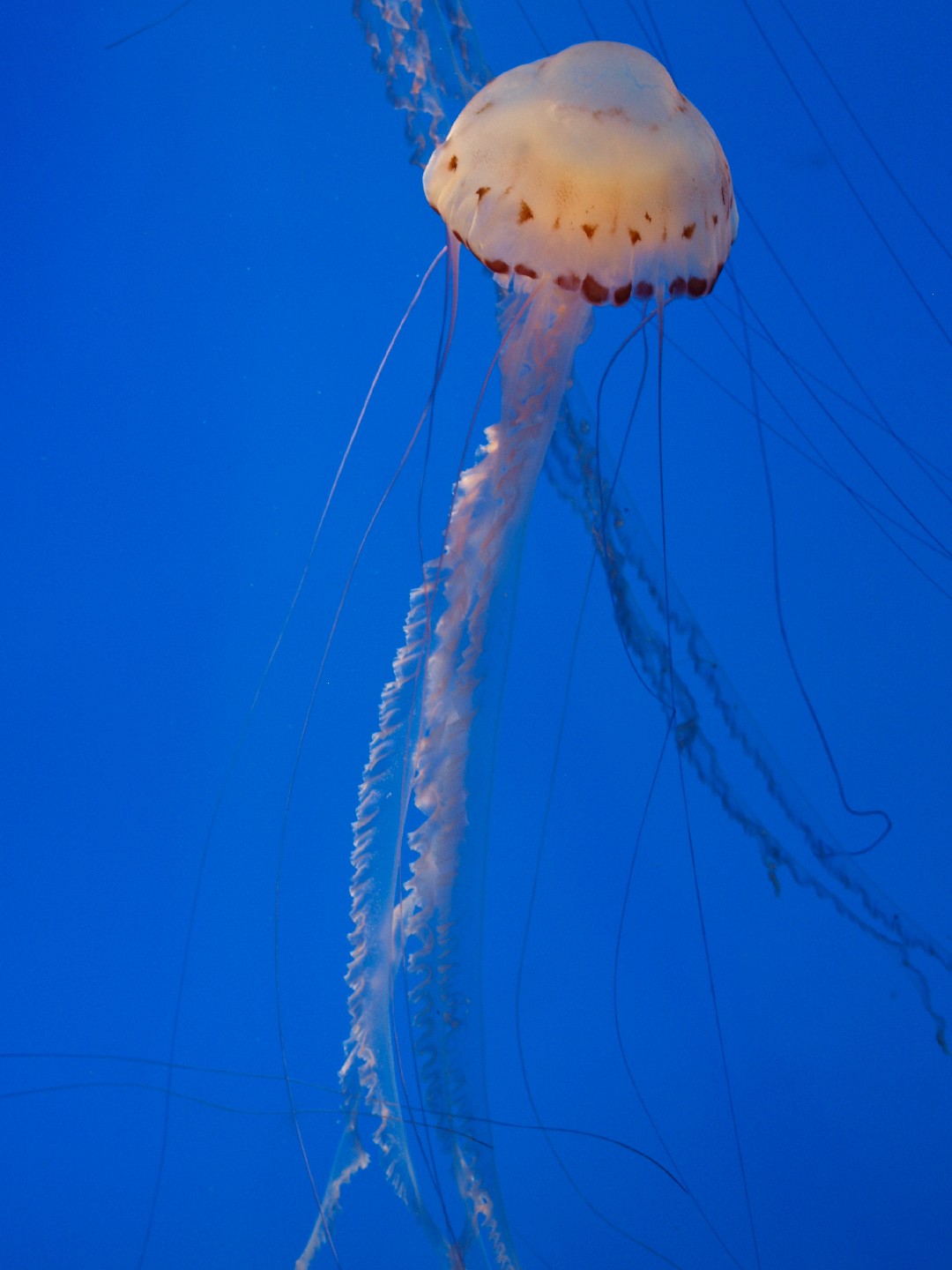Purple-striped jelly
A species of Sea nettle Scientific name : Chrysaora colorata Genus : Sea nettle
Purple-striped jelly, A species of Sea nettle
Botanical name: Chrysaora colorata
Genus: Sea nettle
Content
Description People often ask
 Photo By Captmondo , used under CC-BY-SA-3.0 /Cropped and compressed from original
Photo By Captmondo , used under CC-BY-SA-3.0 /Cropped and compressed from original Description
The purple striped jelly is also known as the purple-striped sea nettle. When it is extremely young, it has a pinkish color and its tentacles are long and dark maroon. At the adult stage the dark maroon color of the tentacles starts to fade and the purple appears as stripes on the bell. At a young age the adults' four frilly oral arms will become longer. When the jellyfish starts to get older the tentacles thicken and the purple stripes start to darken and the tentacles start to look pale, its oral arms like to disappear. They are known to feed on a variety of organisms including Cladocera, Appendicularia, Copepoda, Hydromedusae, Siphonophora, and fish eggs. When the prey touches a marginal tentacle, stingers are immediately discharged to paralyze prey and marginal tentacle bends inward to the nearest oral arm. The oral arm is used to transport prey to the gastrovascular cavity (GVC) and to catch motionless prey. The sting of this jellyfish is extremely painful to humans but is rare.
* Disclaimer: The judgment on toxicity and danger is for reference only. We DO NOT GUARANTEE any accuracy of such judgment. Therefore, you SHALL NOT rely on such judgment. It is IMPORTANT TO SEEK PROFESSIONAL ADVICE in advance when necessary.
People often ask
How long do purple-striped jelly live?
What do purple-striped jelly eat?
Where do purple-striped jelly live?
How big does purple-striped jelly get?
Scientific Classification
Phylum
Cnidarians Class
Jelly fish Order
Flag-mouth jellies Family
Pelagiid jellies Genus
Sea nettle Species
Purple-striped jelly